Did you ever think you’d organize toys this frequently? If you’re a parent, you know firsthand how quickly your child’s playroom can turn into a chaotic mess. We’re going to share 7 practical toy organizing ideas that will take from frustrated to relieved.
We have organized a number of playrooms and understand that every family and playroom is unique, so we’ll provide a range of options suitable for different spaces and budgets.
Whether you’re dealing with a mountain of stuffed animals or a plethora of puzzle pieces, our tips will help you tackle the clutter and bring harmony back to your home.
So, are you ready to say goodbye to the chaos? Let’s dive in and see how these toy organizing ideas can transform your playroom into an organized haven that you and your kids will love.
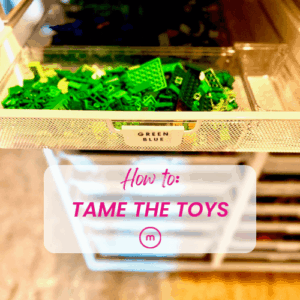
Affiliate Disclosure:
We want to be transparent and inform our users that some of the links on this website are affiliate links. This means that if you make a purchase through these links, we may earn a commission, at no additional cost to you. We only recommend products or services that we believe will add value to our readers. Your support through these affiliate links helps us maintain and improve our content. Thank you for your support!
THE IMPORTANCE OF ORGANIZING TOYS
The importance of organizing toys extends beyond maintaining an organized space. A well-organized toy area contributes to giving kids responsibility and encouraging good habits.
It also aids in enhancing creativity, as children can easily access and explore their playthings. Additionally, an organized toy space promotes safety, reducing the risk of accidents. Nobody likes stepping on a Lego.
BENEFITS OF AN ORGANIZED PLAYROOM
An organized playroom brings a host of benefits for both children and parents alike.
- It fosters a conducive environment for imaginative play, allowing kids to easily locate and engage with their toys.
- The orderliness instills a sense of responsibility and routine, teaching children the importance of tidiness from an early age.
- For parents, an organized playroom translates to reduced stress, as cleaning up becomes a more streamlined process.
COMMON TOY ORGANIZING CHALLENGES
SORTING AND CATEGORIZING TOYS
Sorting and categorizing toys is an important step in effective toy organization. This involves grouping similar items together, creating a systematic and easily navigable toy storage system.
Categorizing toys by type, size, or theme not only streamlines the clean-up process but also makes it simpler for children to find and engage with their favorite playthings.
It encourages a sense of order and responsibility while giving a clear view of the toys.
TOY ORGANIZING TIPS
Maintaining an organized playroom requires ongoing effort and consistency. Here are some tips to help:
- Establish Clear Rules: Set clear rules for clean-up and involve children in the process. Consistent expectations create routines that contribute to a consistently organized space.
- Rotate Toys: Periodically rotate toys to keep the playroom fresh and prevent boredom. Store some items out of reach and switch them with toys currently in use to maintain children’s interest.
- Storage Labels: Clearly label storage containers or bins with words or pictures to help children identify where each type of toy belongs. This makes it easier for them to participate in clean-up.
- Declutter Regularly: Conduct regular decluttering sessions to remove broken or unused toys. Donate items that children have outgrown to make space for new playthings.
- Donate Bin: Add a donate bin in the play area that is out of sight to make it easier to maintain throughout the year.
7 TOY ORGANIZING IDEAS
1. Closet Shelves
Shelves are always a good playroom storage idea, especially when it comes to storing toys. This space previously was empty, nothing was in there. Adding shelves created more space and got everything off of the floor.
Boaxel from IKEA was used for this closet. The great thing about these shelves is that they are adjustable, the brackets can go up or down.
Shelves hold a majority of toys from books to dolls to music toys. They also give you the ability to use stackable bins or large storage bins.
When it comes to organizing shelves, create zones to keep them organized. For example, one shelf is dedicated to dressing up, another one for Barbies another one for books, and so on.
There are a lot of categories when it comes to toys which means multiple categories will likely have to go on one shelf. Do your best to keep like with like.

2. Cube Organizer
The next playroom storage idea is to use a cube organizer. These are extremely common and make great use of space while keeping toys organized.
Cube organizers keep items together in one location. There are a variety of ways to organize these cube organizers. One of the most common ways is with storage bins.
There are two types of storage bins, clear and not clear. Clear bins give you the ability to see everything non-clear bins conceal hide the toys and don’t have to see it all. It all comes down to your personal preference.
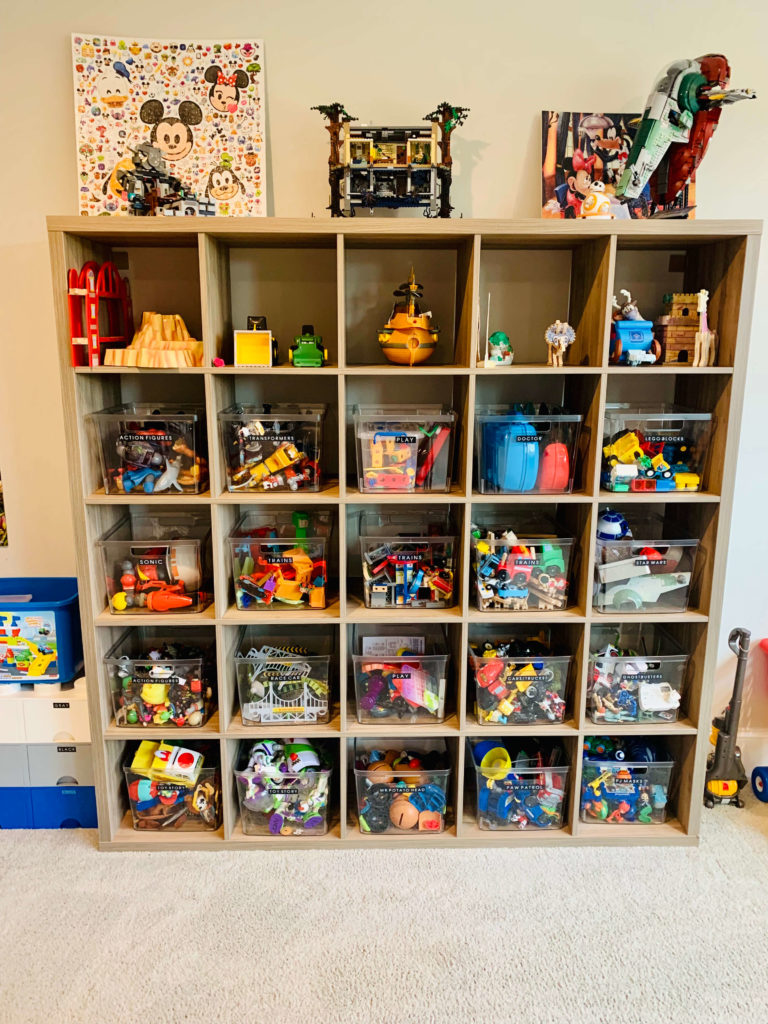
3. Ladder Bookshelf
Bookshelves, similar shelves are a great playroom storage idea because they give you the ability to display important pieces like Lego creations. They also add a design element to the space.
Lego displays work great for playrooms because, after all that hard work, no kid wants to take that apart. Bigger bulkier toys such as cars and American Girl dolls would work well here too.
This ladder bookshelf is the memorabilia of their toys on display. As one can see the Mack Daddy Lego structure went all the way up top, this way no one would bump into it or accidentally knock it down. We all know how that would end.
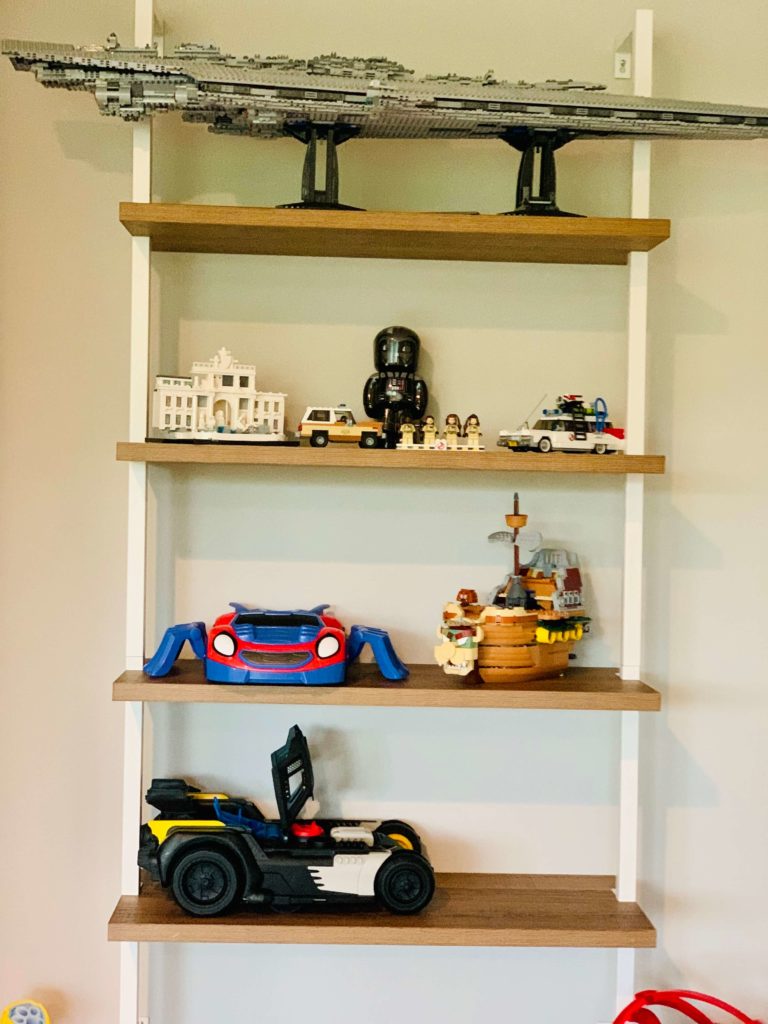
4. TV Stand
Unconventional pieces are a great way to get organized especially when it comes to playroom storage. This unit is categorized as a TV stand, the back of the unit is designed for it as there are multiple cutouts for it.
The water hyacinth bins fit perfectly in here as there is space available for them to breathe, they’re not crammed together.
There is also enough space between the bin and the unit where you can toss the toys in there during cleanup versus having to pull out the entire bin.
May seem tedious but it’s the small things that make a big difference when it comes to organization.
The Legos were stored by color and stored in these clear stackable bins.
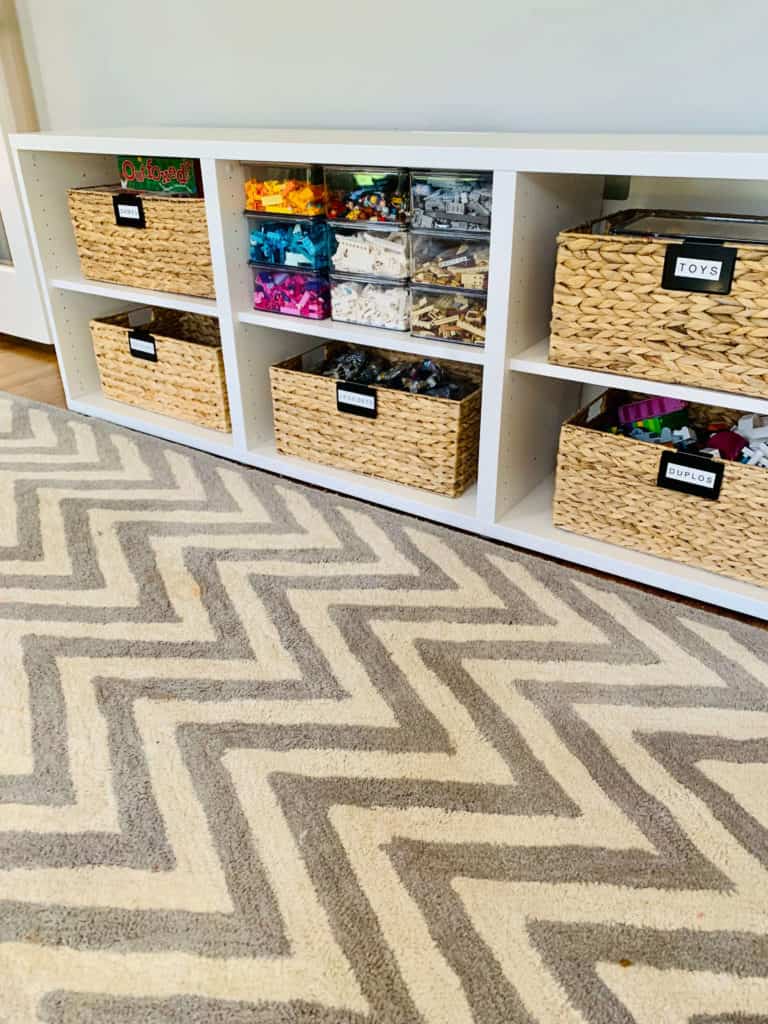
5. Custom Built Shelves with Desk
There are times when what you want and what you are looking for are not coming together. That is exactly what happened with this space.
We used a local cabinet maker who custom-designed this space based on the dimensions wants and needs. She wanted open shelving with clear bins so the kids could see what they had.
The wall space between the storage units was going to be for crafts.
We used a utility board to keep all the craft items organized. The drawers consisted of pencils, crayons, and markers. Craft boards make great use of wall space and provide structure. Kids know exactly what is there, where to find it, and how to put it back where it belongs.
Each wall unit had pull-out drawers with dividers. We added these to make it easy to access toys. When there is an opportunity to add functionality to a space with kids we use it. Kids know how to take out bins, and while they hope to always get items back in the right bin that’s not always the case.
The last thing added to this space were these puzzle organizers. You can store eight puzzles in this organizer which means the bulky boxes can be eliminated. Worried about the picture? No problem cut it off the box and put it in the bottom of the organizer.

6. Storage Units with Doors
The storage unit has the option to have doors or not have them. This homeowner wanted them because she did not want to see the toys.
The center of the room gives them plenty of space to play with dolls, games, or dress up. We were able to add a reading nook in the cut-out and create a dedicated doll zone in the corner.
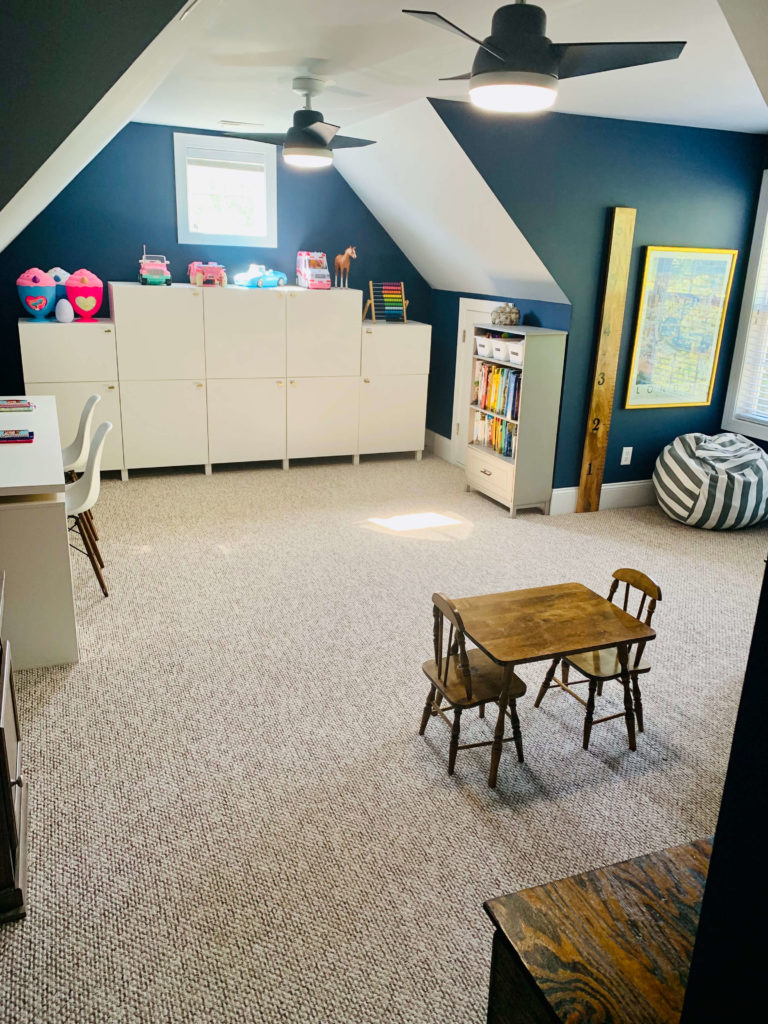
7. Storage Units with Bins
There are a few toy organizing ideas that come with different bin options. The first option is bins that slide-in horizontally and the second option is where they slide vertically.
Deciding on with unit will come down to a few factors:
- Type of material: Do you prefer plastic or metal?
- Budget: How much do you want to spend?
- Easy of Use: Which ones will be easier for your kids to use?
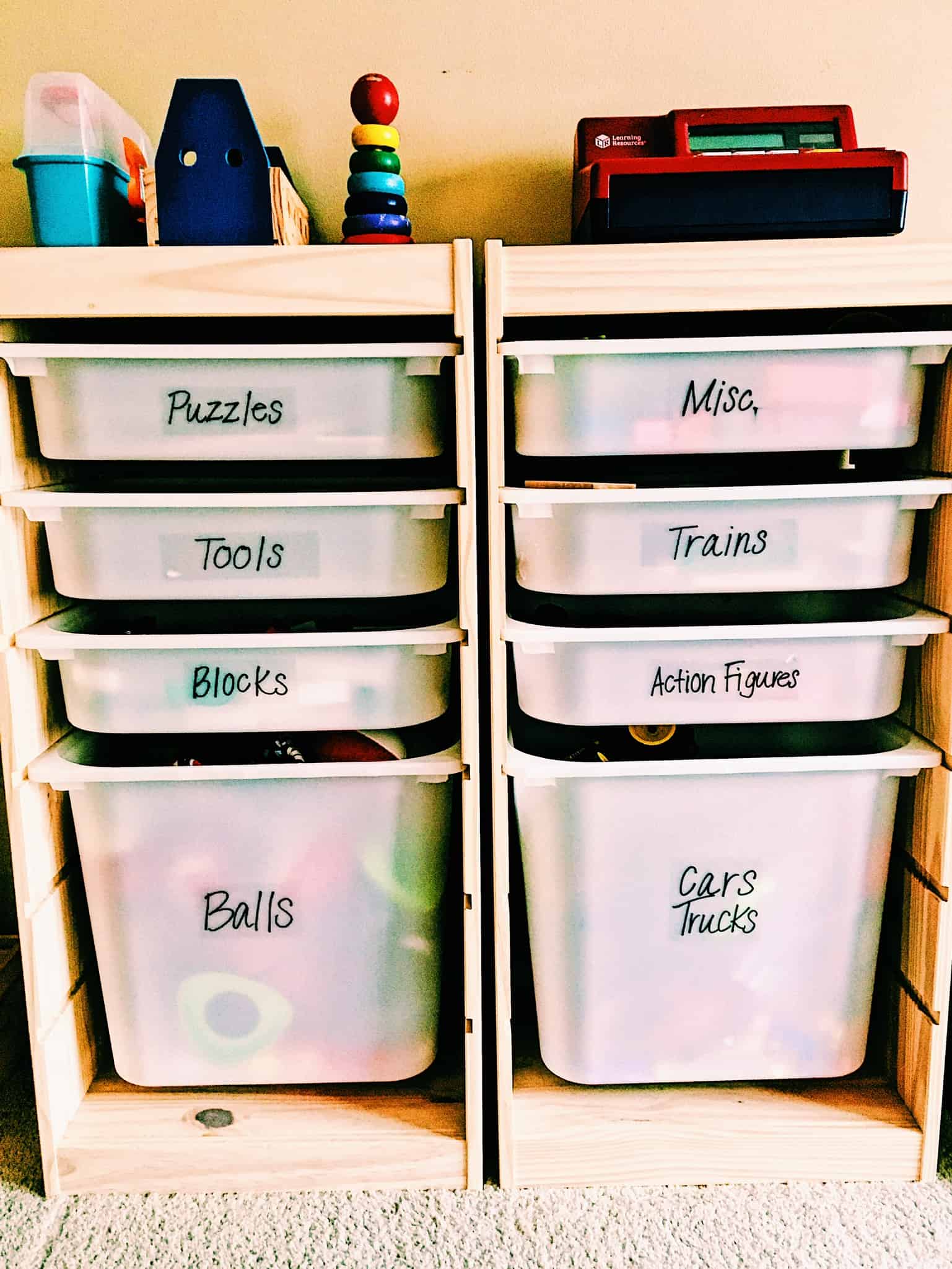
The consistent theme with all 7 of these toy organizing ideas is utilizing vertical space. You’ll now scroll back up through the post and see that every single space is using vertical storage.
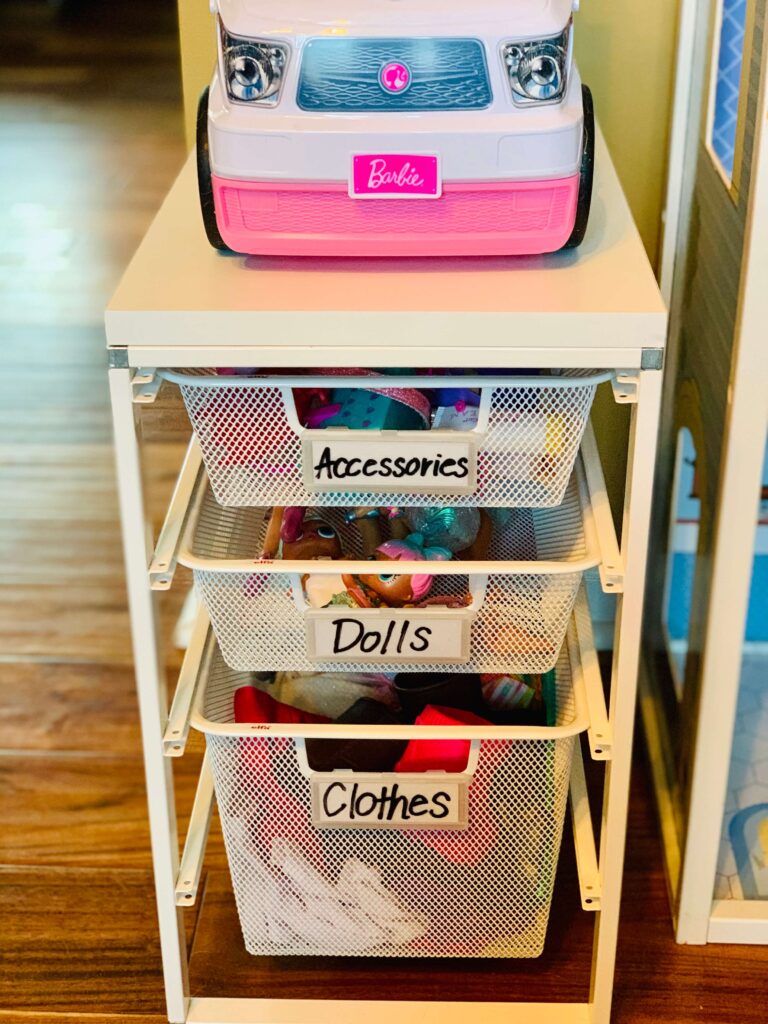
STEPS TO ORGANIZING TOYS
Organizing your toys will be slightly different than all of the other areas of your home. It depends if you are currently using a toy organizer or not.
1. Gather all of your toys
Get all of your toys together in one space. If you are currently using a toy organizer, empty it out completely.
2. Sort toys by category
Keep the categories high level and combine them when necessary. For example, cars and trucks can be grouped into one category. Here are some examples of categories:
- Blocks
- Cars/Trucks
- Dolls
- Puzzles
- Learning toys
- Action Figures
- Dress Up
- Small toys
- Balls
- Books
- Misc.
3. Purge toys
Have your child or children involved in this process. When they learn to get rid of toys they no longer play with, they are learning organizing habits from an early age. It’s teaching them to make decisions.
Get rid of anything that is broken or is missing pieces. Also, get rid of the toys they won’t play with. Another option instead of getting rid of the toys is rotating the toys. You can keep them in a storage bin that they can’t find and rotate them through every few months. It will be like Christmas all over again for them.
4. Measure your space
Once everything is cleared from the space. Measure it: Length x width x height. After that is complete, it’s time to figure out the best type of system.
5. Decide on a system
After measurements have been determined and toys have been purged, it’s time to craft a solution to best optimize space and organize toys.
Questions that will need to be answered:
- What is your budget?
- How much space is available?
- What type of organizer will optimize space best?
- Will this be easy for the kids to maintain?
- What sizes of toys are going to be stored?
When it comes to choosing the right bins and containers, here are some tips:
- Smaller toys (Barbie’s, cars, etc.) work better in smaller bins.
- Open bins work great for tossing toys into them making cleanup a little easier.
- Clear bins make it easier to see toys while solid bins conceal them.
- Stackable bins keep items visible and accessible.
- Hooks make it easier to hang dress-up items.
- A blend of solid and clear bins makes the space more visually appealing.
6. Install and Organize Toys
Get the system in place first before organizing toys. Assemble all the pieces and display the bins where you’d like them to go. Use Post-It notes as a guide while putting toys in their respective.
7. Labeling Bins
Once you have everything assembled, label each bin. This is an important step, especially when keeping toys organized.
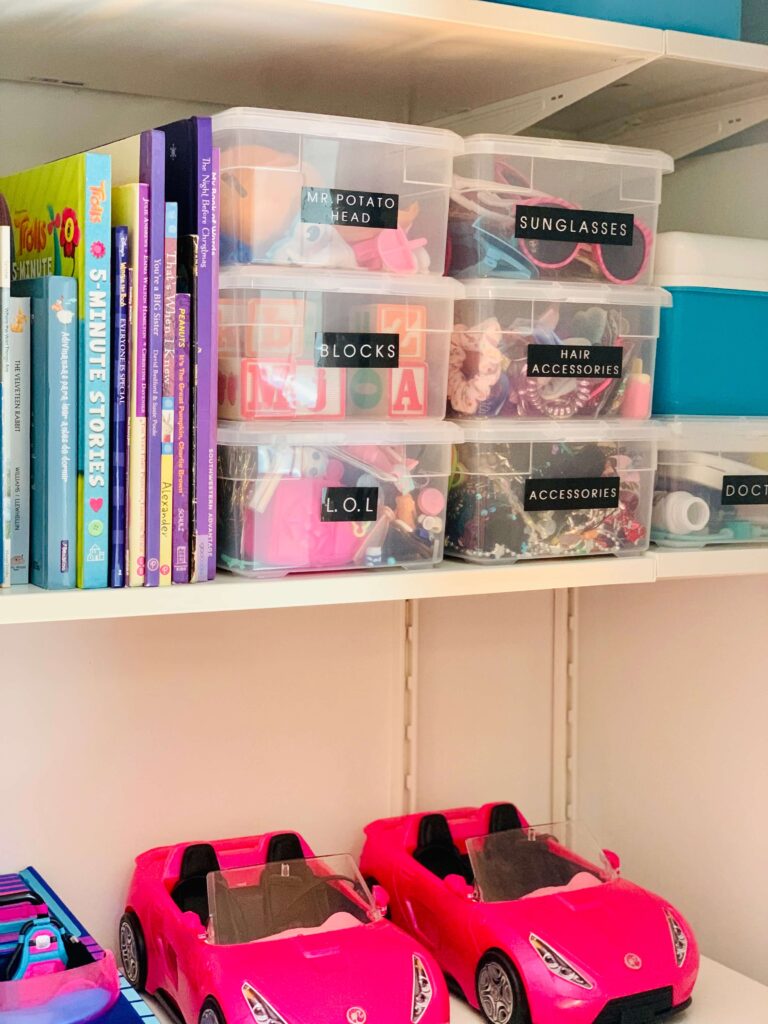
TOY ORGANIZING IDEAS PRODUCT RECOMMENDATIONS
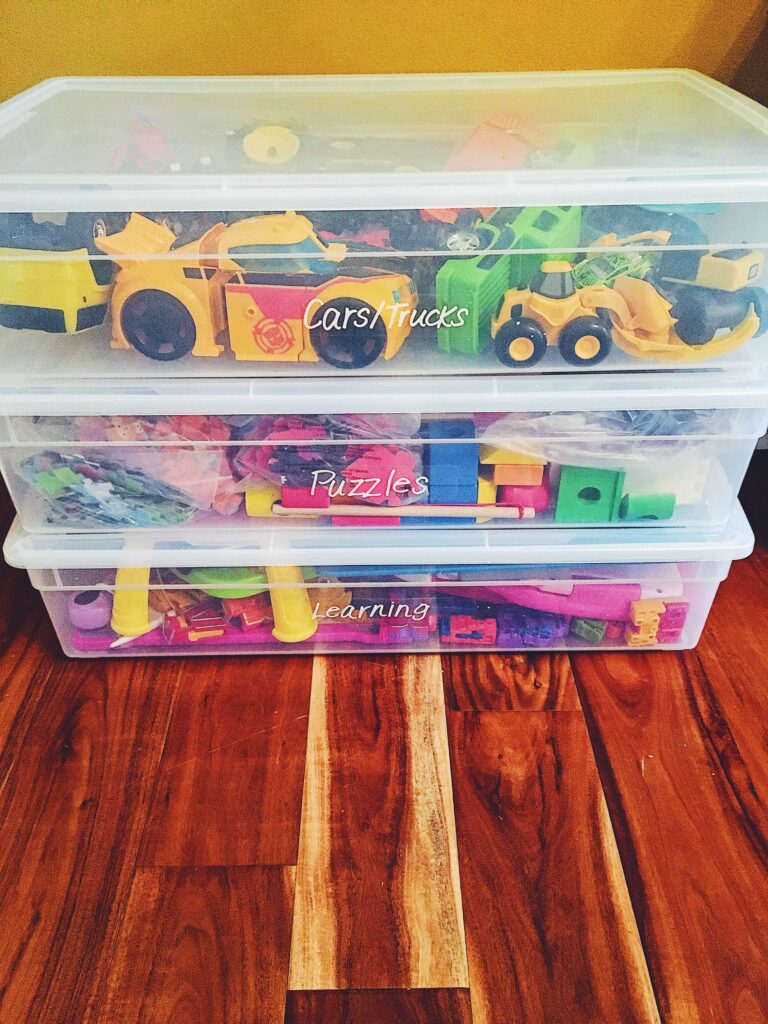
FINAL THOUGHTS
These 7 toy organizing ideas show you it is possible to get your toys organized and keep it that way. When there is a good system in place, it makes it easy for kids to follow.
Organizing starts out as a project and becomes a practice and that couldn’t be more true for kids toys as they grow up, their toy preferences change.
Creating a system that grows with them as they age keeps not only keeps things in order, it saves you your sanity.
+ show Comments
- Hide Comments
add a comment